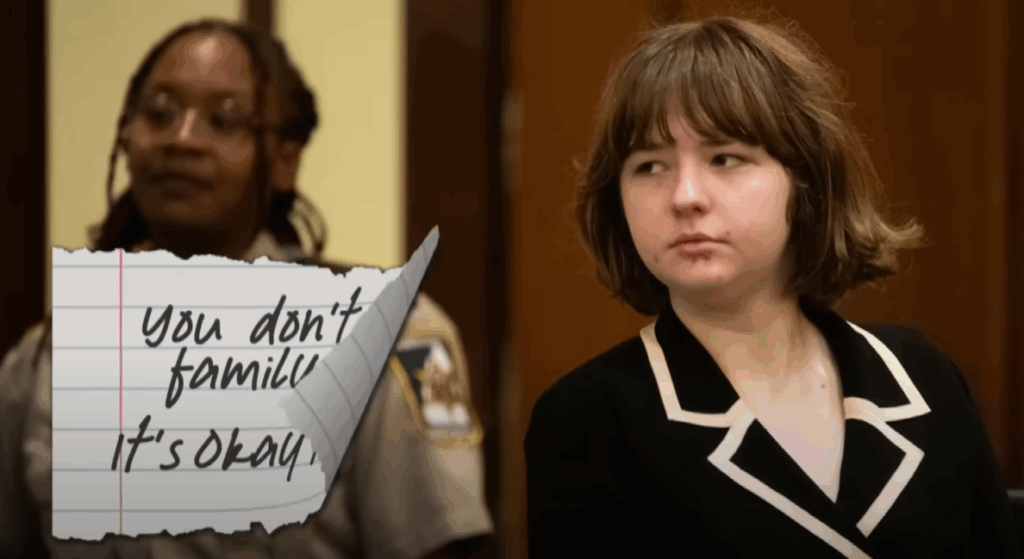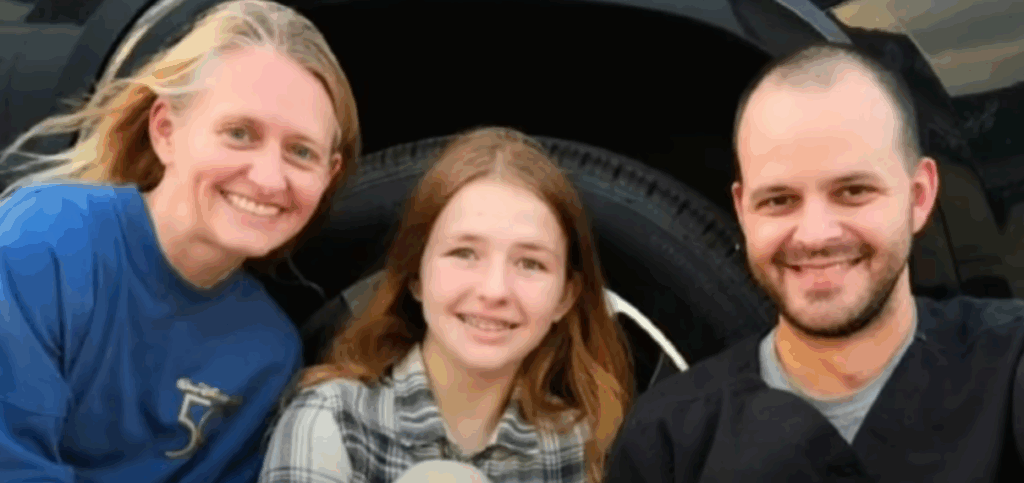In a case that has left a community reeling, a 15-year-old girl has been convicted of first-degree murder for fatally shooting her mother in the face and attempting to kill her stepfather in a chilling, premeditated attack inside their suburban home. The shocking crime was caught on home surveillance footage, painting a horrifying portrait of a teenager who meticulously planned and carried out a brutal ambush.
A Shocking Betrayal Behind Closed Doors
The tragedy took place when Carly Greg, then only 14 years old, quietly walked through the hallway of her family’s home late at night with a loaded handgun in her hands. Surveillance video revealed the teenager moving stealthily behind her unsuspecting mother, who was completely unaware of the danger lurking just steps behind her.
Moments later, a series of deafening gunshots echoed through the house. Carly had shot her mother in the face at point-blank range, killing her instantly. What happened next was even more chilling: instead of fleeing or panicking, Carly calmly sat down in the kitchen, strategically positioning herself to await her stepfather’s return.
Using her mother’s phone, she sent him a deceptively warm message designed to lure him home:
“When will you be home, honey?”
Minutes later, when her stepfather entered through the kitchen door, Carly opened fire again.
“When I opened the door to the kitchen, the gun went off in my face,” he recalled during his emotional testimony. The bullet struck his shoulder, but he managed to retreat and make a frantic 911 call as blood poured from his wound.
A Disturbing Glimpse Into Her Mind
One of the most chilling pieces of evidence presented during the trial was a handwritten diary entry found in Carly’s room. In it, she scrawled:
“You don’t need family. It’s okay to be evil.”
This diary entry, combined with her methodical actions, painted a picture of a girl whose violent intentions were not a sudden outburst but rather premeditated and deliberate.
Prosecutors also played audio from the surveillance camera during the trial. In a dramatic moment, the prosecutor stood before the jury, holding the murder weapon, and reenacted the shooting step by step.
“Fired once — you hear her mother scream,” he said.
“Fired twice — you hear her scream again. One, two, three, four — you hear the third shot.”
Jurors watched and listened in stunned silence as the horrifying timeline unfolded in the courtroom.
Insanity Defense Rejected
Carly’s defense team argued that she should be found not guilty by reason of insanity, claiming that the teenager suffered from severe mental health issues. According to her lawyers, Carly told her psychiatrist that she felt like a “zombie” due to the combination of medications she was prescribed for anxiety and depression.
They argued that her actions were the result of impaired judgment and diminished capacity, not calculated evil. However, the prosecution countered this argument with evidence of planning — including her use of her mother’s phone to lure her stepfather, her calm behavior during the arrest, and her chilling writings.
The jury ultimately sided with the prosecution. After just one hour of deliberation, they returned a verdict of guilty of first-degree murder. Carly showed little to no emotion as the verdict was read aloud.
Life Without Parole
Following the verdict, the jury recommended that Carly be sentenced to life in prison without the possibility of parole, a sentence usually reserved for adults convicted of the most heinous crimes. The judge agreed, stating that the evidence showed a deliberate, cold-blooded attack that left no room for leniency.
A Case That Raises Tough Questions
The Carly Greg case has ignited a national debate over how the justice system should handle juvenile offenders who commit violent crimes. Advocates for criminal justice reform argue that teenagers lack full brain development and should be given opportunities for rehabilitation. Others insist that Carly’s actions were so calculated and cold that she deserves to face the full weight of the law, regardless of her age.
Mental health experts have also weighed in, highlighting the complex intersection between adolescent psychology, medication side effects, and criminal behavior. While the defense’s argument of diminished responsibility was rejected in this case, it has underscored the need for more nuanced discussions about how society treats young offenders with mental health struggles.




